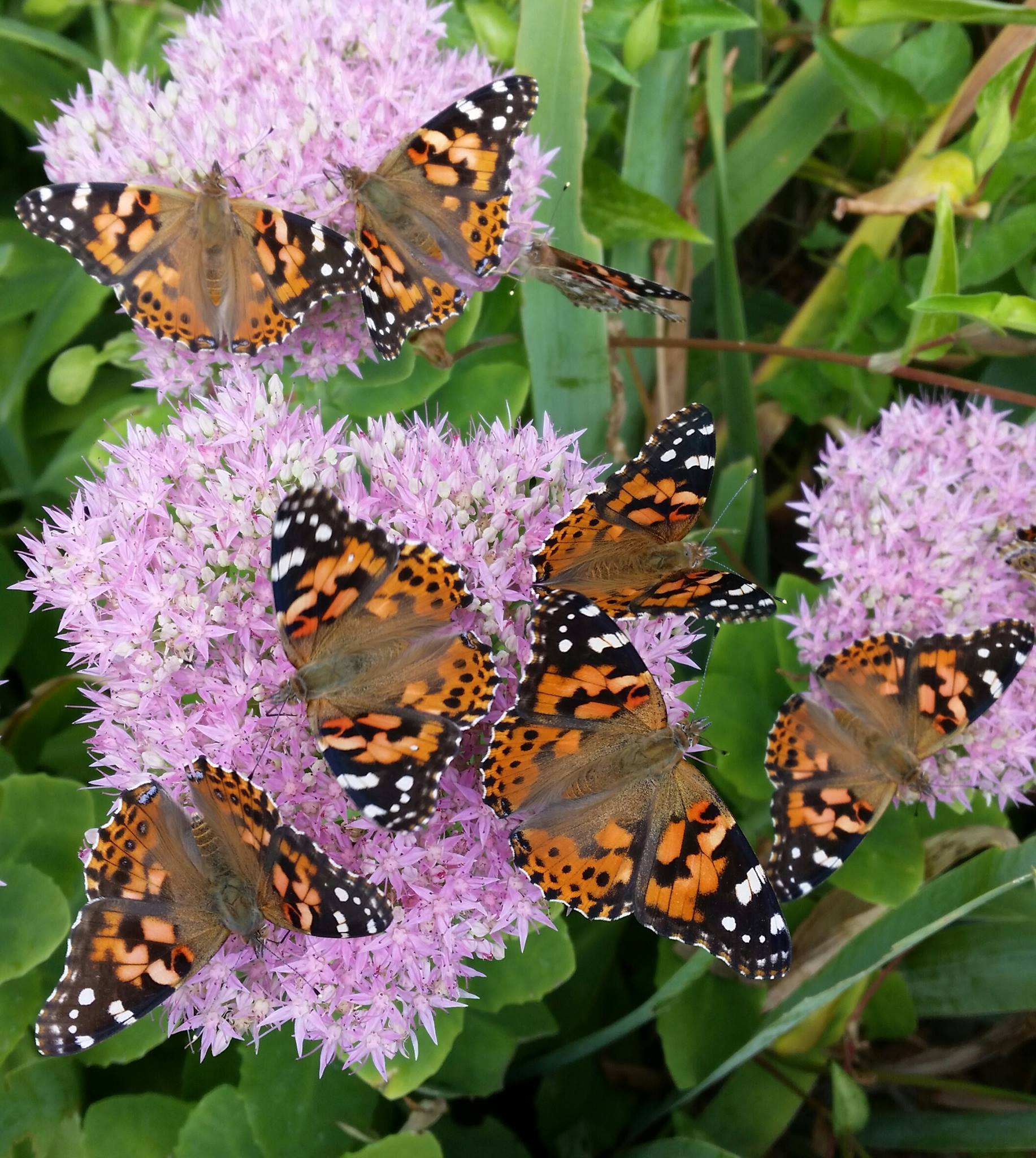Asters are hardy perennials that bloom late summer until the first hard frost. Many asters are native to Nebraska and a late-season source of pollen for migrating monarchs, other butterflies, moths, bumblebees, solitary bees, honey bees and soldier beetles.
Asters are easy to grow and look great in a mass planting. They can be planted with other native plants like purple coneflower, coreopsis, black-eyed Susan and native grasses.
The main plant disease is powdery mildew. It causes a whitish growth that appears on leaves. To reduce the chance of this disease, grow asters in full sun and space the plants, so they are not crowded.
Heath aster – Symphyotrichum ericoides, 2-3 feet tall with white flowers.
Fendler’s aster-Symphyotrichum fendleri, 6-16 inches tall, white flowers, low growing.
‘My Antonia’ white flowers, 12 inches tall.
Smooth aster – Symphyotrichum leave, 2-4 feet tall with purple flowers.
‘Bluebird’ violet-blue flowers, 3-4 feet tall.
Calico aster- Symphyotrichum lateriflorum, 2-3 feet tall, small flower heads of white or pale purple flowers with reddish-rose centers.
‘Lady in Black’ white flowers with raspberry centers, purplish-black leaves, 3-4 feet tall.
New England aster – Symphyotrichum novae-angliae, 3-5 feet tall with pink, red-violet, purple or blue flowers.
‘Andenken an Alma Pötschke’ is a fast growing, upright, compact plant that grows 30-42 inches tall. It has masses of flowers, 2″ across, with rose pink petals which bloom for 6 weeks or longer in late summer.
Kickin’ series of bushy and compact asters, 2 ft. tall and wide, late summer to fall-blooming with semi-double flowers. Comes in seven different cultivars: ‘Carmine Red,’ ‘Lilac Blue,’ ‘Lavender,’ ‘Pink Chiffon,’ ‘Silver Pink,’ ‘Mauve,’ and ‘Purple.’
New York aster-Aster novi-belgii, 3-4 feet tall, purple, dark pink, white flowers.
‘Alert’ purplish-red flowers, 1.5-2 feet tall.
Aromatic Aster– Symphyotrichum oblongifolium, 1-4 feet tall with pink, lavender-blue, purple flowers.
‘Dream Beauty’ pink flowers with orange centers, 1 foot tall.
‘Fanny’ purple-blue flowers, 2-3 feet tall.
‘Raydon’s Favorite’ violet blue flowers, 2-3 feet tall.
‘October Skies’ sky-blue flowers, 1-2 feet.
Sky Blue aster-Symphyotrichum oolentangiense, 3 feet tall with light blue flowers.
Silky aster– Symphyotrichum sericeus, 1-2 feet, one inch purple flowers, branching stems with leaves covered silvery hairs, blooms in August.
Prairie aster – Symphyotrichum turbinellum, 3-4 feet tall with lavender flowers.
MJ Frogge























